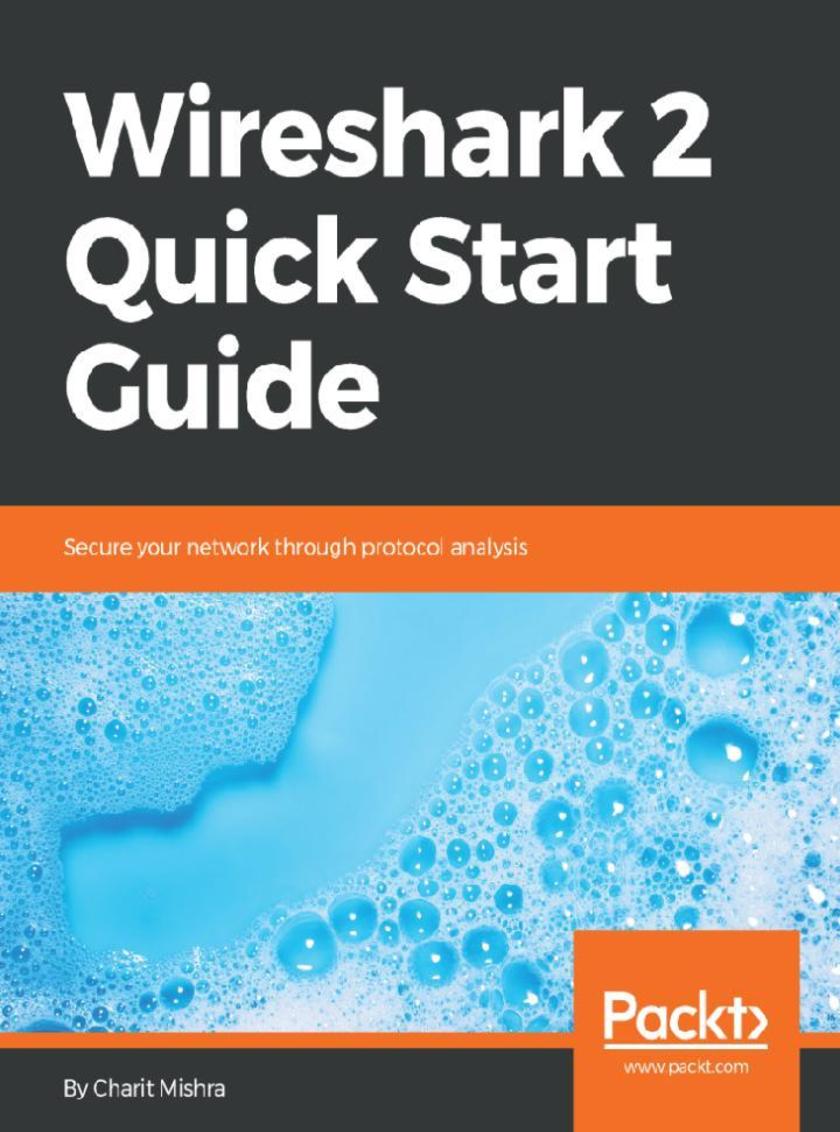
Wireshark 2 Quick Start Guide
¥50.13
Protect your network as you move from the basics of the Wireshark scenarios to detecting and resolving network anomalies. About This Book ? Learn protocol analysis, optimization and troubleshooting using Wireshark, an open source tool ? Learn the usage of filtering and statistical tools to ease your troubleshooting job ? Quickly perform root-cause analysis over your network in an event of network failure or a security breach Who This Book Is For If you are a security professional or a network enthusiast who is interested in understanding the internal working of networks and packets, then this book is for you. No prior knowledge of Wireshark is needed. What You Will Learn ? Learn how TCP/IP works? ? Install Wireshark and understand its GUI ? Creation and Usage of Filters to ease analysis process ? Understand the usual and unusual behaviour of Protocols ? Troubleshoot network anomalies quickly with help of Wireshark ? Use Wireshark as a diagnostic tool for network security analysis to identify source of malware ? Decrypting wireless traffic ? Resolve latencies and bottleneck issues in the network In Detail Wireshark is an open source protocol analyser, commonly used among the network and security professionals. Currently being developed and maintained by volunteer contributions of networking experts from all over the globe. Wireshark is mainly used to analyze network traffic, analyse network issues, analyse protocol behaviour, etc. - it lets you see what's going on in your network at a granular level. This book takes you from the basics of the Wireshark environment to detecting and resolving network anomalies. This book will start from the basics of setting up your Wireshark environment and will walk you through the fundamentals of networking and packet analysis. As you make your way through the chapters, you will discover different ways to analyse network traffic through creation and usage of filters and statistical features. You will look at network security packet analysis, command-line utilities, and other advanced tools that will come in handy when working with day-to-day network operations. By the end of this book, you have enough skill with Wireshark 2 to overcome real-world network challenges. Style and approach Learn and practice the skills of protocol and network analysis using the tool of the pros, Wireshark.

A h?séges férfi?: Boldogságnovellák
¥50.36
Ha kíváncsi az olyan témákra, mint például hogy miként lehet felt?rni egy jelszót, vagy egy webhelyet, esetleg hogyan lehet lehallgatni bárki kommunikációját egy nyílt wifi hálózaton, akkor ez a k?nyv ?nnek szól. Sokan azt hiszik, hogy ezek ?rd?ng?s dolgok, pedig egyáltalán nem azok. ?ppen ezért fontos, hogy védekezni is kell ellenük, ami szintén nem bonyolult, csak egy kis odafigyelésre van szükség. K?nyvünk mindkét oldalt megmutatja, elrettentésképpen a lehet?ségeket, okulásként a védekezési módokat. Ha ?n azt hiszi, hogy biztonságban van, hiszen nem csinál semmi illegálisat és még vírusirtó is van a gépén, akkor nagyon téved! Teljesk?r? védelem ugyanis nem létezik! Ha elolvassa ezt a k?nyvet, meg fog d?bbenni, hogy milyen sok támadási lehet?ség van adataink ellen. A k?nyv, azon túl, hogy ismerteti, mit jelentenek az információbiztonsági szakkifejezések olyan témákkal foglalkozik, mint hogy milyen eszk?z?k támadhatók és hogyan, hogyan dolgozik egy hacker, mekkora kockázatot jelent az emberi tényez? (social engineering), stb. Kitér a jelszavak biztonságára, a kül?nféle hackeléshez használható programok és azok kezelésére, a billenty?zetnaplózási lehet?ségekre, a hálózatok és weboldalak támadására és felt?résére, az online bankolási kockázatokra, a titkosítási módszerekre, illetve hogy mit érdemes tenni a biztonságos adattárolás érdekében.Természetesen senkit sem akarunk illegális tevékenységre buzdítani, célunk sokkal inkább azt megmutatni, hogy mekkora veszélynek vagyunk kitéve, ezáltal a támadási és védekezési lehet?ségek bemutatásával ?szt?n?zzük az embereket a biztonságosabb számítógéphasználatra.

Building RESTful Web Services with Java EE 8
¥52.31
Architect and design data-intensive applications and, in the process, learn how to collect, process, store, govern, and expose data for a variety of use cases Key Features *Integrate the data-intensive approach into your application architecture *Create a robust application layout with effective messaging and data querying architecture *Enable smooth data flow and make the data of your application intensive and fast Book Description Are you an architect or a developer who looks at your own applications gingerly while browsing through Facebook and applauding it silently for its data-intensive, yet ?uent and efficient, behaviour? This book is your gateway to build smart data-intensive systems by incorporating the core data-intensive architectural principles, patterns, and techniques directly into your application architecture. This book starts by taking you through the primary design challenges involved with architecting data-intensive applications. You will learn how to implement data curation and data dissemination, depending on the volume of your data. You will then implement your application architecture one step at a time. You will get to grips with implementing the correct message delivery protocols and creating a data layer that doesn’t fail when running high traffic. This book will show you how you can divide your application into layers, each of which adheres to the single responsibility principle. By the end of this book, you will learn to streamline your thoughts and make the right choice in terms of technologies and architectural principles based on the problem at hand. What you will learn *Understand how to envision a data-intensive system *Identify and compare the non-functional requirements of a data collection component *Understand patterns involving data processing, as well as technologies that help to speed up the development of data processing systems *Understand how to implement Data Governance policies at design time using various Open Source Tools *Recognize the anti-patterns to avoid while designing a data store for applications *Understand the different data dissemination technologies available to query the data in an efficient manner *Implement a simple data governance policy that can be extended using Apache Falcon Who this book is for This book is for developers and data architects who have to code, test, deploy, and/or maintain large-scale, high data volume applications. It is also useful for system architects who need to understand various non-functional aspects revolving around Data Intensive Systems.
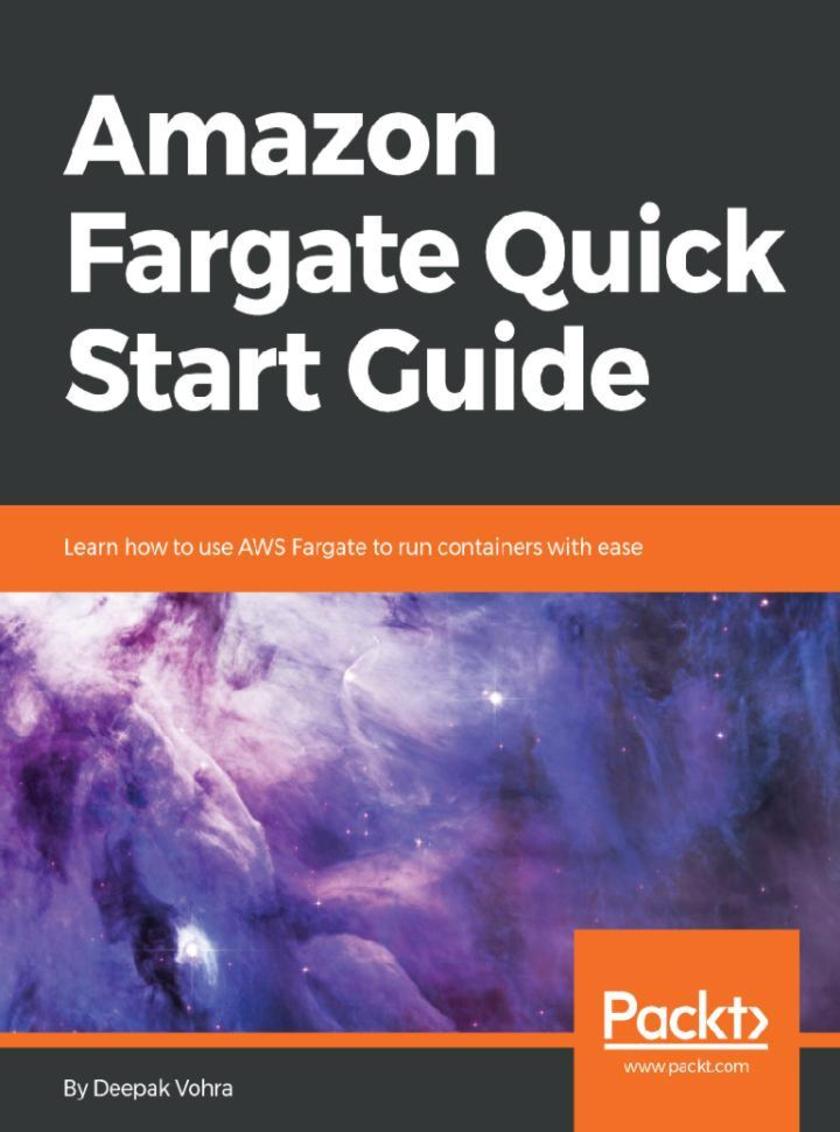
Amazon Fargate Quick Start Guide
¥52.31
This book gets you started and gives you knowledge about AWS Fargate in order to successfully incorporate it in your ECS container application. Key Features *Gives you a quick walk-through over the Amazon Elastic Container Services (ECS) *Provides an in depth knowledge of the components that Amazon Fargate has to offer. *Learn the practical aspects of Docker application development with a managed service Book Description Amazon Fargate is new launch type for the Amazon Elastic Container Service (ECS). ECS is an AWS service for Docker container orchestration. Docker is the de facto containerization framework and has revolutionized packaging and deployment of software. The introduction of Fargate has made the ECS platform serverless. The book takes you through how Amazon Fargate runs ECS services composed of tasks and Docker containers and exposes the containers to the user. Fargate has simplified the ECS platform. We will learn how Fargate creates an Elastic Network Interface (ENI) for each task and how auto scaling can be enabled for ECS tasks. You will also learn about using an IAM policy to download Docker images and send logs to CloudWatch. Finally, by the end of this book, you will have learned about how to use ECS CLI to create an ECS cluster and deploy tasks with Docker Compose. What you will learn *Running Docker containers with a managed service *Use Amazon ECS in Fargate launch mode *Configure CloudWatch Logging with Fargate *Use an IAM Role with Fargate *Understand how ECS CLI is used with Fargate *Learn how to use an Application Load Balancer with Fargate *Learn about Auto Scaling with Fargate Who this book is for This book is for Docker users and developers who want to learn about the Fargate platform. Typical job roles for which the book is suitable are DevOps Architect, Docker Engineer, and AWS Cloud Engineer. Prior knowledge of AWS and ECS is helpful but not mandatory.
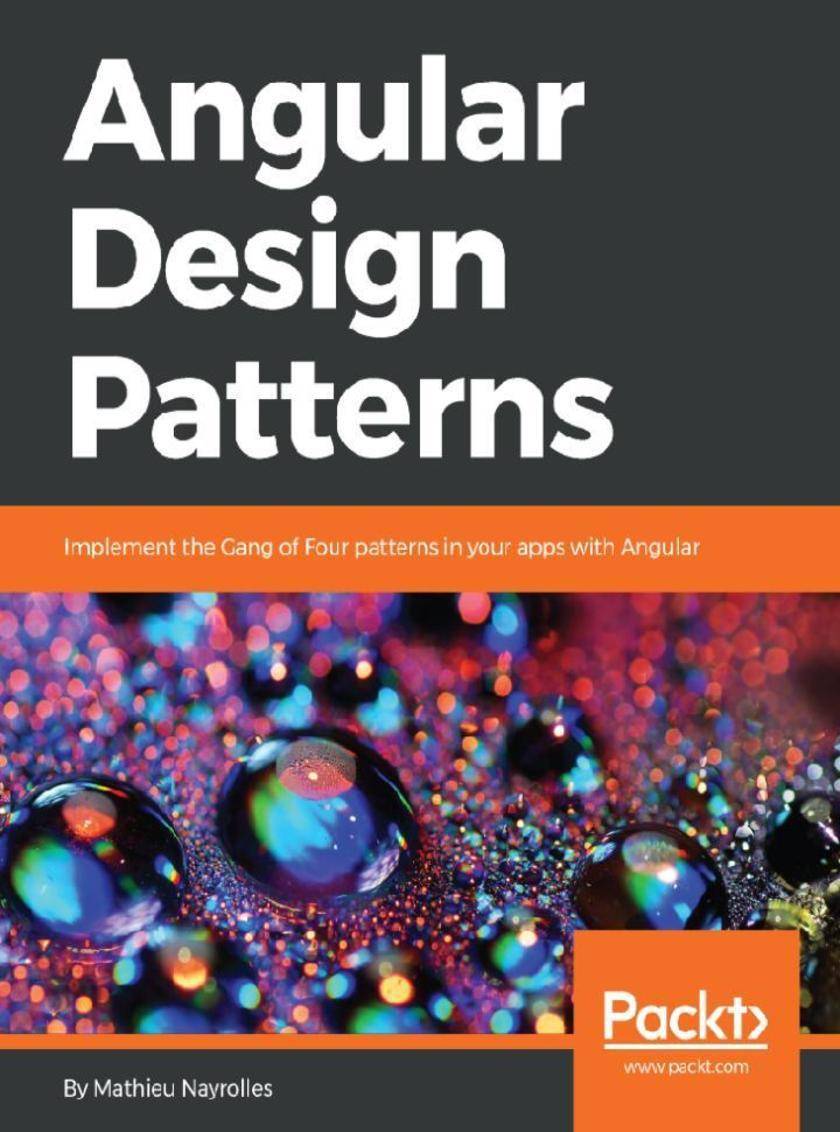
Angular Design Patterns
¥52.31
Make the most of Angular by leveraging design patterns and best practices to build stable and high performing apps Key Features *Get to grips with the benefits and applicability of using different design patterns in Angular with the help of real-world examples *Identify and prevent common problems, programming errors, and anti-patterns *Packed with easy-to-follow examples that can be used to create reusable code and extensible designs Book Description This book is an insightful journey through the most valuable design patterns, and it will provide clear guidance on how to use them effectively in Angular. You will explore some of the best ways to work with Angular and how to use it to meet the stability and performance required in today's web development world. You’ll get to know some Angular best practices to improve your productivity and the code base of your application. We will take you on a journey through Angular designs for the real world, using a combination of case studies, design patterns to follow, and anti-patterns to avoid. By the end of the book, you will understand the various features of Angular, and will be able to apply well-known, industry-proven design patterns in your work. What you will learn *Understand Angular design patterns and anti-patterns *Implement the most useful GoF patterns for Angular *Explore some of the most famous navigational patterns for Angular *Get to know and implement stability patterns *Explore and implement operations patterns *Explore the official best practices for Angular *Monitor and improve the performance of Angular applications Who this book is for If you want to increase your understanding of Angular and apply it to real-life application development, then this book is for you.
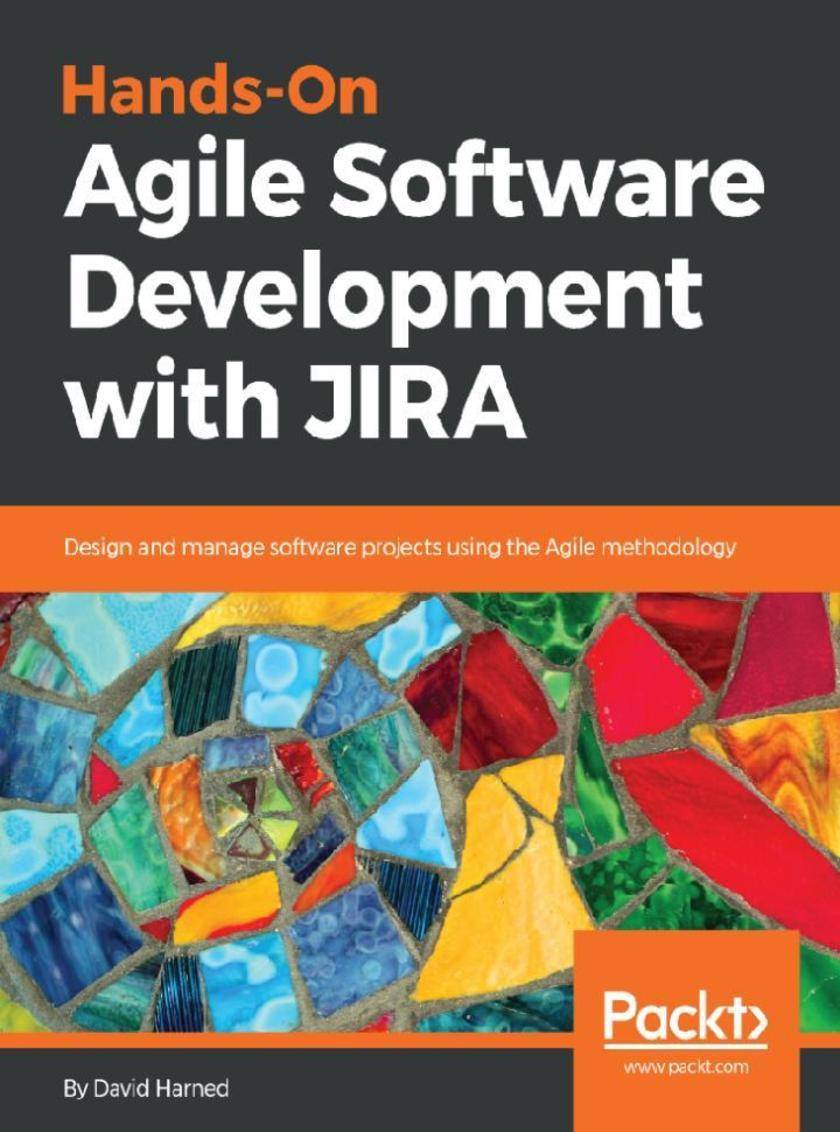
Hands-On Agile Software Development with JIRA
¥52.31
Plan, track, and release great software Key Features * Learn to create reports and dashboard for effective project management * Implement your development strategy in JIRA. * Practices to help you manage the issues in the development team Book Description As teams scale in size, project management can get very complicated. One of the best tools to deal with this kind of problem is JIRA. This book will start by organizing your project requirements and the principles of Agile development to get you started. You will then be introduced to set up a JIRA account and the JIRA ecosystem to help you implement a dashboard for your team's work and issues. You will learn how to manage any issues and bugs that might emerge in the development stage. Going ahead, the book will help you build reports and use them to plan the releases based on the study of the reports. Towards the end, you will come across working with the gathered data and create a dashboard that helps you track the project's development. What you will learn * Create your first project (and manage existing projects) in JIRA * Manage your board view and backlogs in JIRA * Run a Scrum Sprint project in JIRA * Create reports (including topic-based reports) * Forecast using versions * Search for issues with JIRA Query Language (JQL) * Execute bulk changes to issues * Create custom filters, dashboards, and widgets * Create epics, stories, bugs, and tasks Who this book is for This book is for administrators who wants to apply the Agile approach to managing the issues, bugs, and releases in their software development projects using JIRA.
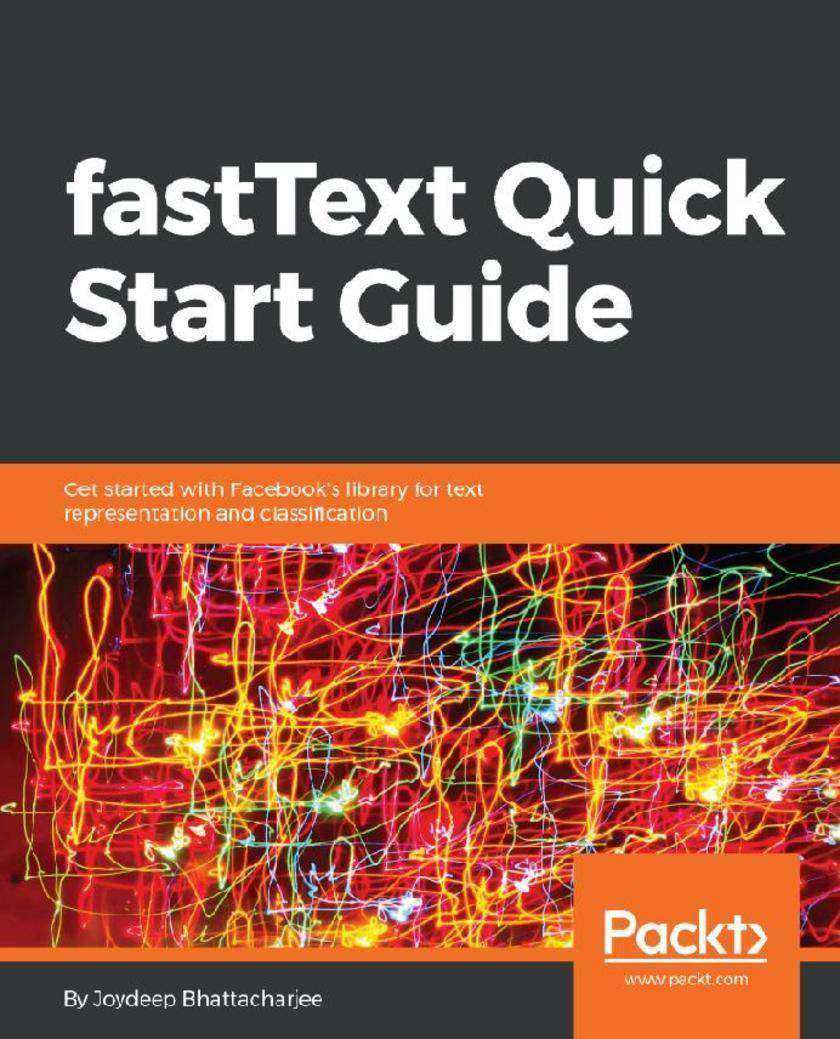
fastText Quick Start Guide
¥52.31
Perform efficient fast text representation and classification with Facebook's fastText library Key Features *Introduction to Facebook's fastText library for NLP *Perform efficient word representations, sentence classification, vector representation *Build better, more scalable solutions for text representation and classification Book Description Facebook's fastText library handles text representation and classification, used for Natural Language Processing (NLP). Most organizations have to deal with enormous amounts of text data on a daily basis, and gaining efficient data insights requires powerful NLP tools such as fastText.? This book is your ideal introduction to fastText. You will learn how to create fastText models from the command line, without the need for complicated code. You will explore the algorithms that fastText is built on and how to use them for word representation and text classification.? Next, you will use fastText in conjunction with other popular libraries and frameworks such as Keras, TensorFlow, and PyTorch.? Finally, you will deploy fastText models to mobile devices. By the end of this book, you will have all the required knowledge to use fastText in your own applications at work or in projects. What you will learn *Create models using the default command line options in fastText *Understand the algorithms used in fastText to create word vectors *Combine command line text transformation capabilities and the fastText library to implement a training, validation, and prediction pipeline *Explore word representation and sentence classification using fastText *Use Gensim and spaCy to load the vectors, transform, lemmatize, and perform other NLP tasks efficiently *Develop a fastText NLP classifier using popular frameworks, such as Keras, Tensorflow, and PyTorch Who this book is for This book is for data analysts, data scientists, and machine learning developers who want to perform efficient word representation and sentence classification using Facebook's fastText library. Basic knowledge of Python programming is required.
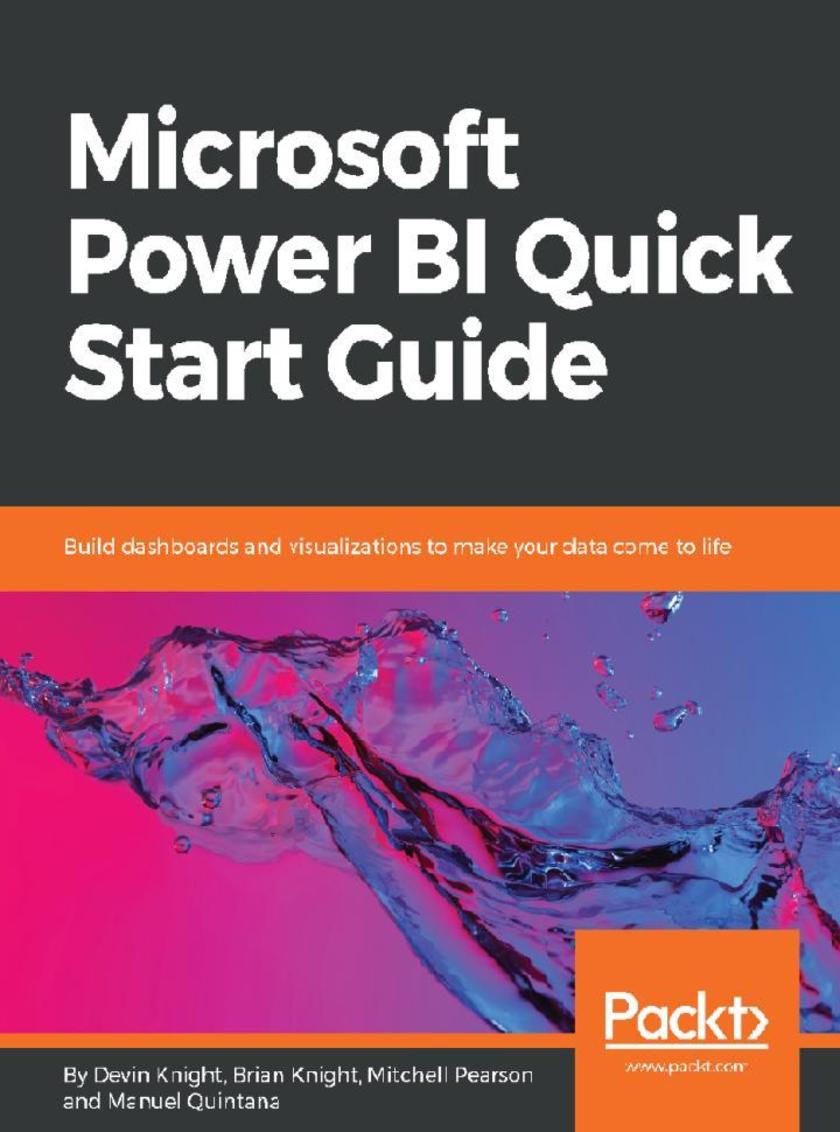
Microsoft Power BI Quick Start Guide
¥52.31
Develop robust, Scala-powered projects with the help of machine learning libraries such as SparkML to harvest meaningful insight Key Features *Gain hands-on experience in building data science projects with Scala *Exploit powerful functionalities of machine learning libraries *Use machine learning algorithms and decision tree models for enterprise apps Book Description Scala, together with the Spark Framework, forms a rich and powerful data processing ecosystem. Modern Scala Projects is a journey into the depths of this ecosystem. The machine learning (ML) projects presented in this book enable you to create practical, robust data analytics solutions, with an emphasis on automating data workflows with the Spark ML pipeline API. This book showcases or carefully cherry-picks from Scala’s functional libraries and other constructs to help readers roll out their own scalable data processing frameworks. The projects in this book enable data practitioners across all industries gain insights into data that will help organizations have strategic and competitive advantage. Modern Scala Projects focuses on the application of supervisory learning ML techniques that classify data and make predictions. You'll begin with working on a project to predict a class of flower by implementing a simple machine learning model. Next, you'll create a cancer diagnosis classification pipeline, followed by projects delving into stock price prediction, spam filtering, fraud detection, and a recommendation engine. By the end of this book, you will be able to build efficient data science projects that fulfil your software requirements. What you will learn *Create pipelines to extract data or analytics and visualizations *Automate your process pipeline with jobs that are reproducible *Extract intelligent data efficiently from large, disparate datasets *Automate the extraction, transformation, and loading of data *Develop tools that collate, model, and analyze data *Maintain the integrity of data as data flows become more complex *Develop tools that predict outcomes based on “pattern discovery” *Build really fast and accurate machine-learning models in Scala Who this book is for Modern Scala Projects is for Scala developers who would like to gain some hands-on experience with some interesting real-world projects. Prior programming experience with Scala is necessary.
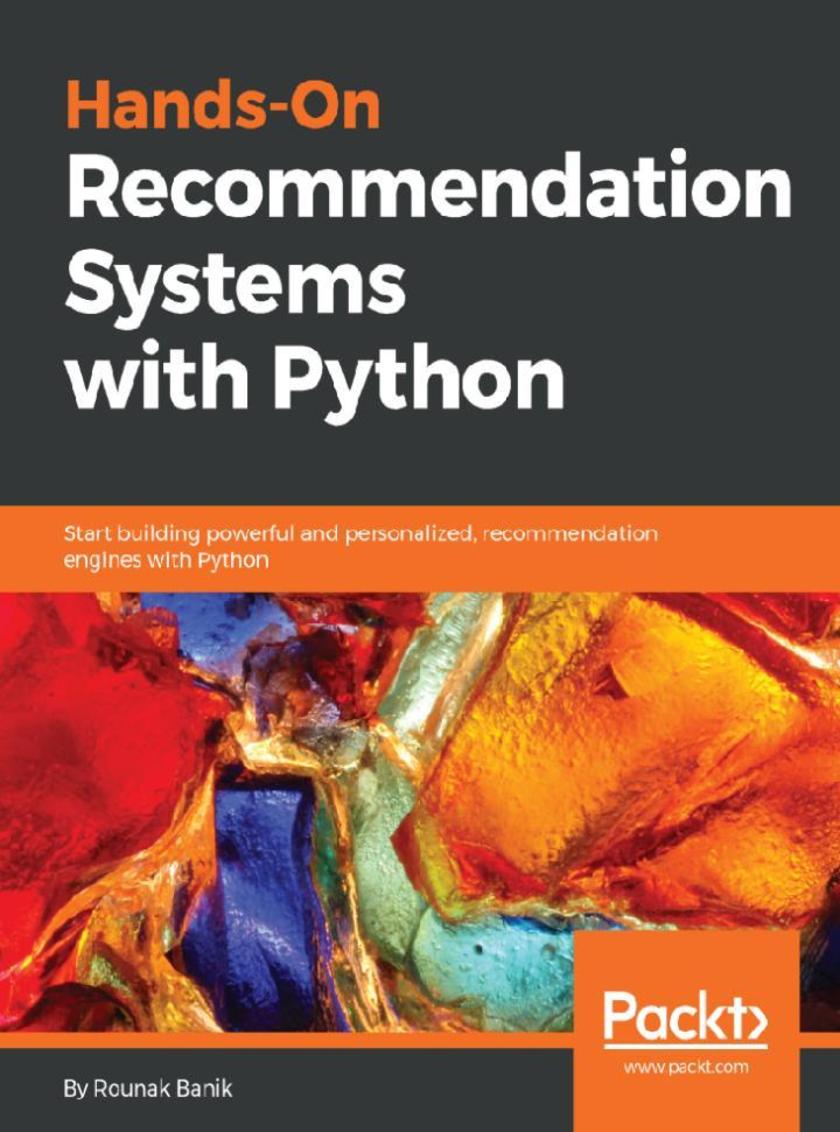
Hands-On Recommendation Systems with Python
¥52.31
Secure your Java applications by integrating the Spring Security framework in your code Key Features *Provide authentication, authorization and other security features for Java applications. *Learn how to secure microservices, cloud, and serverless applications easily *Understand the code behind the implementation of various security features Book Description Security is one of the most vital concerns for any organization. The complexity of an application is compounded when you need to integrate security with existing code, new technology, and other frameworks. This book will show you how to effectively write Java code that is robust and easy to maintain. Hands-On Spring Security 5 for Reactive Applications starts with the essential concepts of reactive programming, Spring Framework, and Spring Security. You will then learn about a variety of authentication mechanisms and how to integrate them easily with the Spring MVC application. You will also understand how to achieve authorization in a Spring WebFlux application using Spring Security.You will be able to explore the security confgurations required to achieve OAuth2 for securing REST APIs and integrate security in microservices and serverless applications. This book will guide you in integrating add-ons that will add value to any Spring Security module. By the end of the book, you will be proficient at integrating Spring Security in your Java applications What you will learn *Understand how Spring Framework and Reactive application programming are connected *Implement easy security confgurations with Spring Security expressions *Discover the relationship between OAuth2 and OpenID Connect *Secure microservices and serverless applications with Spring *Integrate add-ons, such as HDIV, Crypto Module, and CORS support *Apply Spring Security 5 features to enhance your Java reactive applications Who this book is for If you are a Java developer who wants to improve application security, then this book is for you. A basic understanding of Spring, Spring Security framework, and reactive applications is required to make the most of the book.
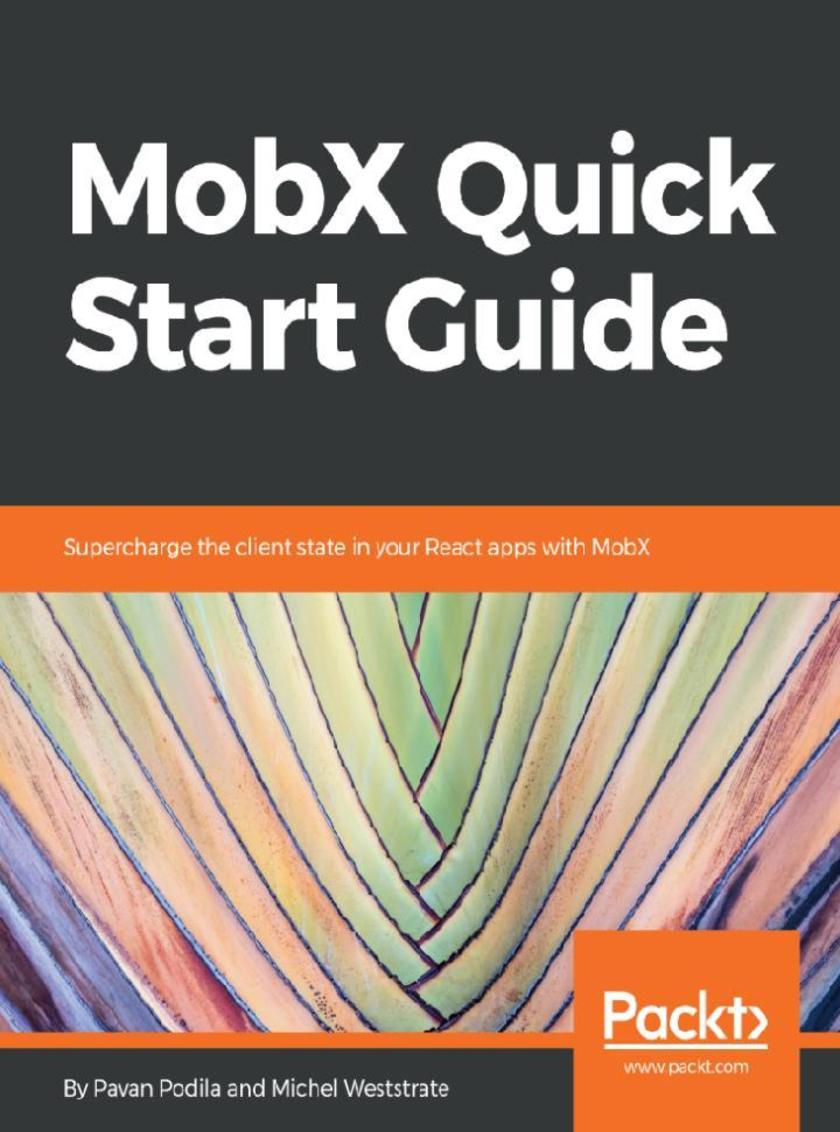
MobX Quick Start Guide
¥52.31
Apply functional Reactive programming for simple and scalable state management with MobX Key Features *The easiest way to learn MobX to enhance your client-side state-management *Understand how the concepts and components fit together *Work through different state management scenarios with MobX Book Description MobX is a simple and highly scalable state management library in JavaScript. Its abstractions can help you manage state in small to extremely large applications. However, if you are just starting out, it is essential to have a guide that can help you take the first steps. This book aims to be that guide that will equip you with the skills needed to use MobX and effectively handle the state management aspects of your application. You will first learn about observables, actions, and reactions: the core concepts of MobX. To see how MobX really shines and simplifies state management, you'll work through some real-world use cases. Building on these core concepts and use cases, you will learn about advanced MobX, its APIs, and libraries that extend MobX. By the end of this book, you will not only have a solid conceptual understanding of MobX, but also practical experience. You will gain the confidence to tackle many of the common state management problems in your own projects. What you will learn *Explore the fundamental concepts of MobX, such as observables, actions, and reactions *Use observables to track state and react to its changes with validations and visual feedback (via React Components) *Create a MobX observable from different data types *Define form data as an observable state and tackle sync and async form validations *Use the special APIs to directly manipulate observables, tracking its changes, and discovering the reasons behind a change *Tackle any state management issue you may have in your app by combining mobx-utils and mobx-state-tree *Explore the internals of the MobX reactive system by diving into its inner workings Who this book is for This book is for web developers who want to implement easy and scalable state management for their apps. Knowledge of HTML, CSS, and JavaScript is assumed

Next.js Quick Start Guide
¥52.31
Create, build and deploy universal JavaScript applications using Next.js 6.0 Key Features *Work with the entire tool-chain for developing universal Javascript applications with Next.js *A straightforward guide to implementing server-side rendering *Use Next.js to build SEO-friendly and super fast websites Book Description Next.js is a powerful addition to the ever-growing and dynamic JavaScript world. Built on top of React, Webpack, and Babel, it is a minimalistic framework for server-rendered universal JavaScript applications. This book will show you the best practices for building sites using Next. js, enabling you to build SEO-friendly and superfast websites. This book will guide you from building a simple single page app to a scalable and reliable client-server infrastructure. You will explore code sharing between client and server, universal modules, and server-side rendering. The book will take you through the core Next.js concepts that everyone is talking about – hot reloading, code splitting, routing, server rendering, transpilation, CSS isolation, and more. You will learn ways of implementing them in order to create your own universal JavaScript application. You will walk through the building and deployment stages of your applications with the JSON API,customizing the confguration, error handling,data fetching, deploying to production, and authentication. What you will learn *Explore the benefts of server-side rendering with Next.js *Create and link JavaScript modules together by understanding code splitting and bundling *Create website pages and wire them together through website navigation *Extend your application with additional Webpack loaders and features, as well as custom Babel plugins and presets *Use GraphQL and Apollo frameworks with Next.js to fetch data and receive push notifcations *Design and implement core modules, such as logging and authentication, and then more complex solutions for access control and business rule management *Write tests and use online CI tools such as Travis, GitLab, and more *Build a Docker-based container for your app and deploy it to online services such as Heroku and Now.sh Who this book is for This book is for JavaScript developers who want to learn how to generate server-rendered applications.
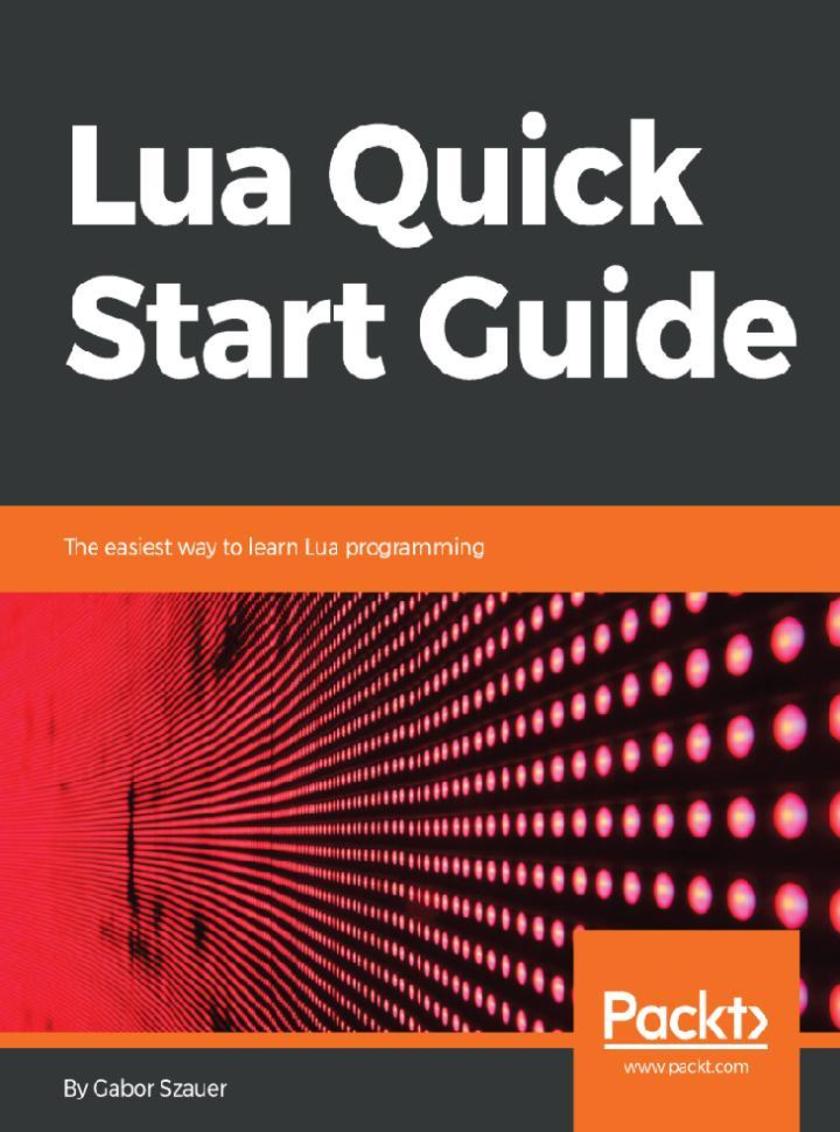
Lua Quick Start Guide
¥52.31
The easiest way to learn Lua programming Key Features *The easiest way to learn Lua coding *Use the Lua standard libraries and debug Lua code *Embed Lua as a scripting language using the Lua C API Book Description Lua is a small, powerful and extendable scripting/programming language that can be used for learning to program, and writing games and applications, or as an embedded scripting language. There are many popular commercial projects that allow you to modify or extend them through Lua scripting, and this book will get you ready for that. This book is the easiest way to learn Lua. It introduces you to the basics of Lua and helps you to understand the problems it solves. You will work with the basic language features, the libraries Lua provides, and powerful topics such as object-oriented programming. Every aspect of programming in Lua, variables, data types, functions, tables, arrays and objects, is covered in sufficient detail for you to get started. You will also find out about Lua's module system and how to interface with the operating system. After reading this book, you will be ready to use Lua as a programming language to write code that can interface with the operating system, automate tasks, make playable games, and much more. This book is a solid starting point for those who want to learn Lua in order to move onto other technologies such as Love2D or Roblox. A quick start guide is a focused, shorter title that provides a faster paced introduction to a technology. It is designed for people who don't need all the details at this point in their learning curve. This presentation has been streamlined to concentrate on the things you really need to know. What you will learn *Understand the basics of programming the Lua language *Understand how to use tables, the data structure that makes Lua so powerful *Understand object-oriented programming in Lua using metatables *Understand standard LUA libraries for math, file io, and more *Manipulate string data using Lua *Understand how to debug Lua applications quickly and effciently *Understand how to embed Lua into applications with the Lua C API Who this book is for This book is for developers who want to get up and running with Lua. This book is ideal for programmers who want to learn to embed Lua in their own applications, as well as for beginner programmers who have never coded before.
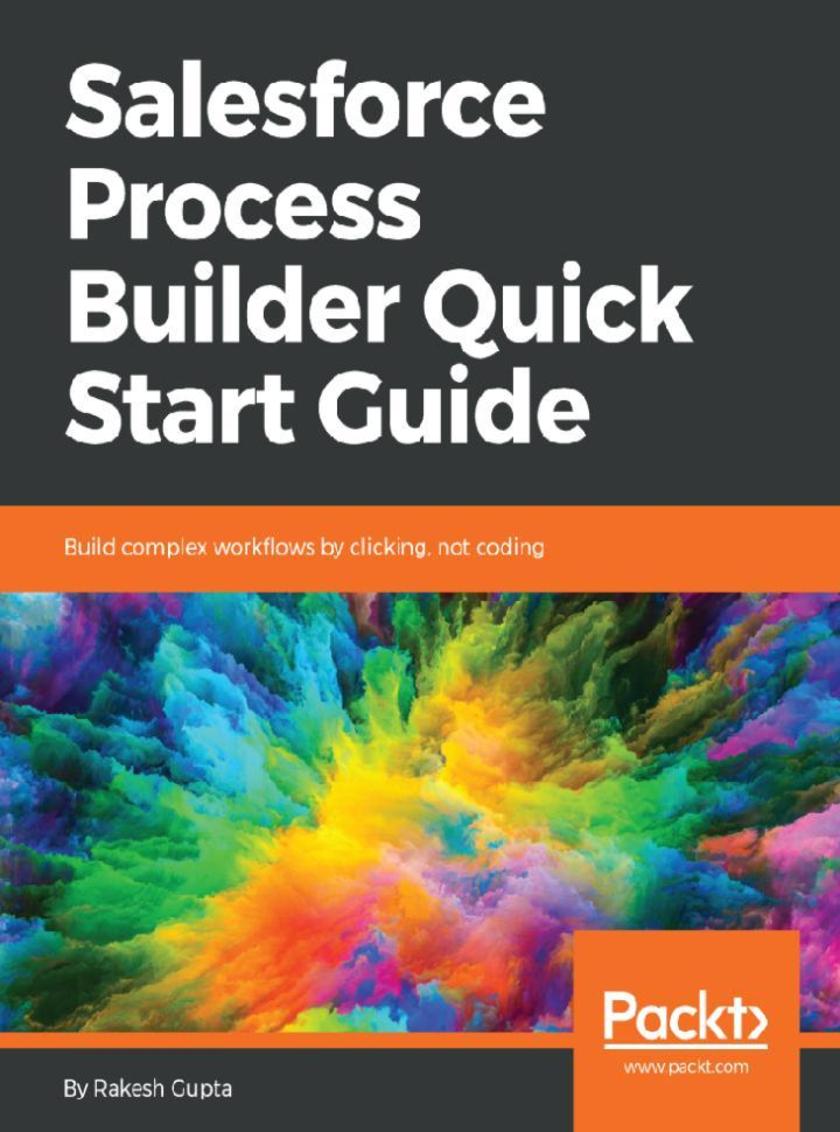
Salesforce Process Builder Quick Start Guide
¥52.31
Click your way to automating business processes with Salesforce Visual Workflow Key Features *Create and maintain complex business processes using Process builder *Discover how to debug and deploy Flow and Process Builder *Use new or existing Flows to work with Salesforce Lightning Experience Book Description Salesforce Management System is an information system used in CRM to automate business processes, such as sales and marketing. Process Builder is a visual tool created to automate business processes in Salesforce. It enables users with no coding expertise to build complex Salesforce workflows. The book starts with an introduction to Process Builder, focussing on the building blocks of creating Processes. Then you will learn about different applications of Process Builder for developing streamlined solutions. You will learn how to easily automate business processes and tackle complex business scenarios using Processes. The book explains the workings of the Process Builder so that you can create reusable processes. It also explains how you can migrate existing Workflow Rules to Process Builder. By the end of the book, you will have a clear understanding of how to use Flows and Process Builder to optimize code usage. What you will learn *Develop an application using point and click with the help of Process Builder *Bypass Processes for specific users *Understand the concepts of reusable processes *Handle complex business processes using Process Builder and keep them clean *Work with formulae in Process Builder to minimize the code required *Create a process with no criteria so as to minimize the amount of rework *Overcome Salesforce's known limitation in terms of referencing picklist values Who this book is for This book is for people who want to use Process Builder to automate their business requirements by clicking, not coding. A basic understanding of Salesforce is required, but not extensive programming knowledge.
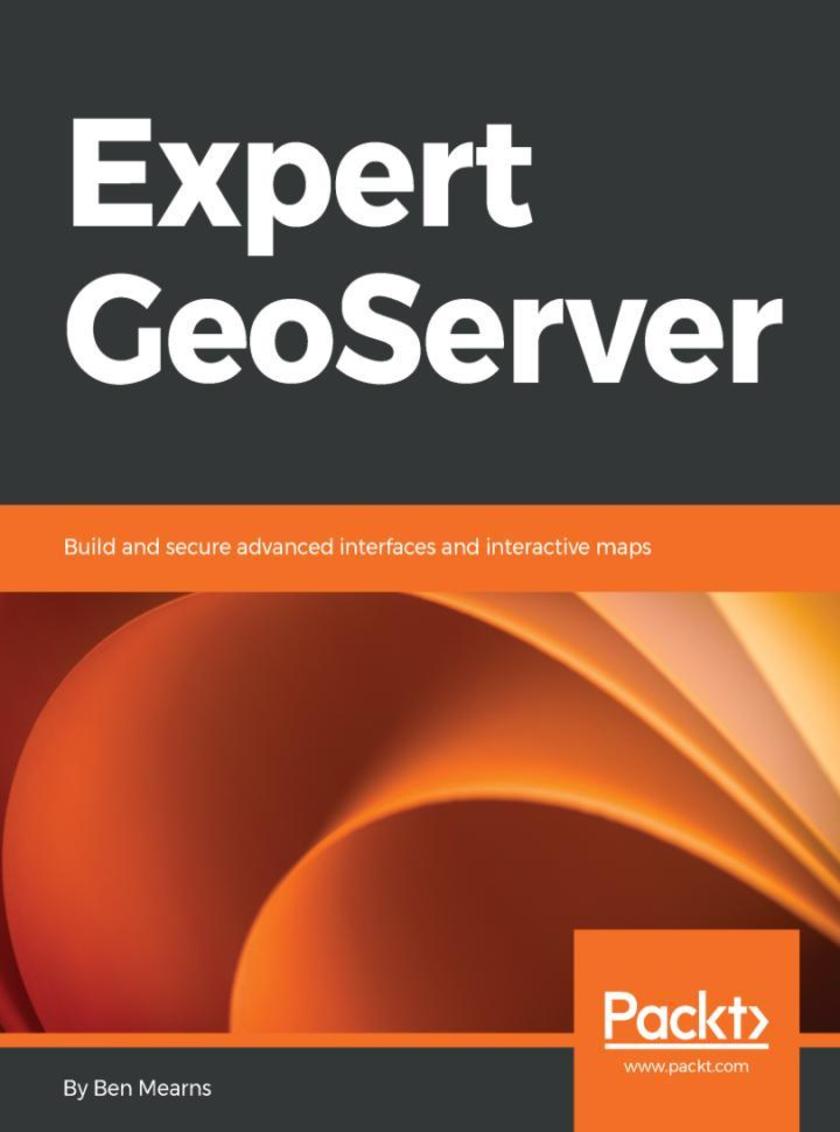
Expert GeoServer
¥52.31
Explore TensorFlow's capabilities to perform efficient deep learning on images Key Features *Discover image processing for machine vision *Build an effective image classification system using the power of CNNs *Leverage TensorFlow’s capabilities to perform efficient deep learning Book Description TensorFlow is Google’s popular offering for machine learning and deep learning, quickly becoming a favorite tool for performing fast, efficient, and accurate deep learning tasks. Hands-On Deep Learning for Images with TensorFlow shows you the practical implementations of real-world projects, teaching you how to leverage TensorFlow’s capabilities to perform efficient image processing using the power of deep learning. With the help of this book, you will get to grips with the different paradigms of performing deep learning such as deep neural nets and convolutional neural networks, followed by understanding how they can be implemented using TensorFlow. By the end of this book, you will have mastered all the concepts of deep learning and their implementation with TensorFlow and Keras. What you will learn *Build machine learning models particularly focused on the MNIST digits *Work with Docker and Keras to build an image classifier *Understand natural language models to process text and images *Prepare your dataset for machine learning *Create classical, convolutional, and deep neural networks *Create a RESTful image classification server Who this book is for Hands-On Deep Learning for Images with TensorFlow is for you if you are an application developer, data scientist, or machine learning practitioner looking to integrate machine learning into application software and master deep learning by implementing practical projects in TensorFlow. Knowledge of Python programming and basics of deep learning are required to get the best out of this book.
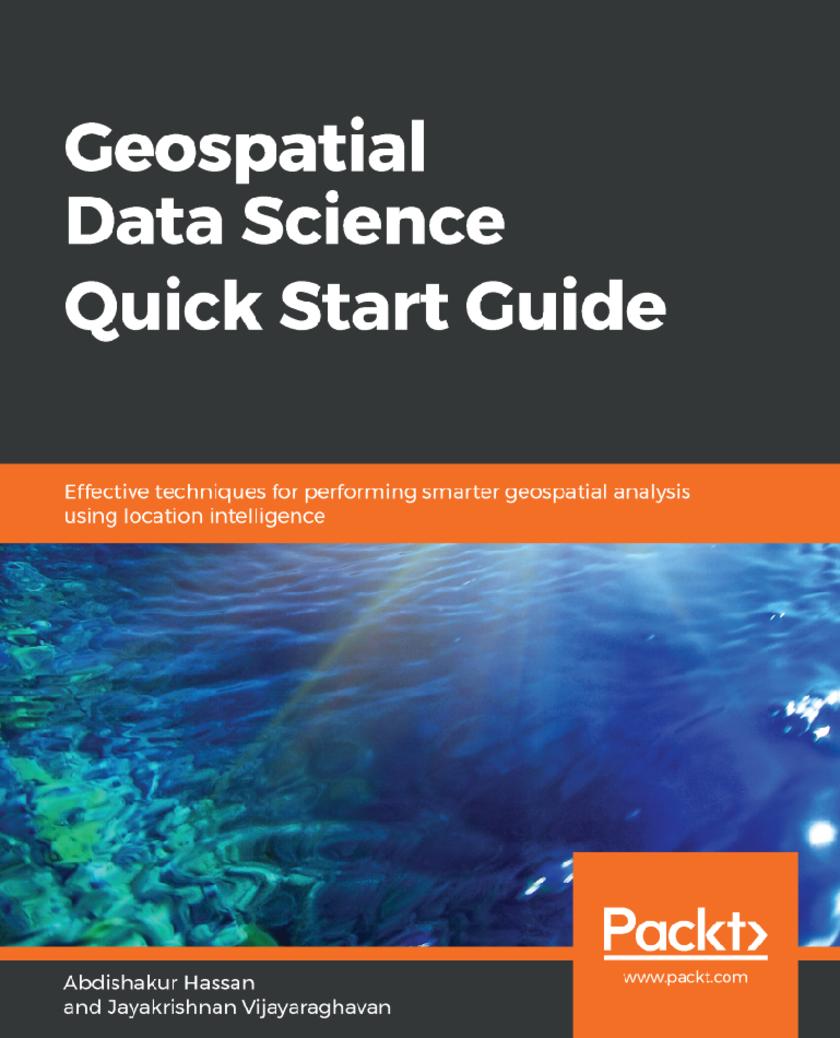
Geospatial Data Science Quick Start Guide
¥53.40
Discover the power of location data to build effective, intelligent data models with Geospatial ecosystems Key Features * Manipulate location-based data and create intelligent geospatial data models * Build effective location recommendation systems used by popular companies such as Uber * A hands-on guide to help you consume spatial data and parallelize GIS operations effectively Book Description Data scientists, who have access to vast data streams, are a bit myopic when it comes to intrinsic and extrinsic location-based data and are missing out on the intelligence it can provide to their models. This book demonstrates effective techniques for using the power of data science and geospatial intelligence to build effective, intelligent data models that make use of location-based data to give useful predictions and analyses. This book begins with a quick overview of the fundamentals of location-based data and how techniques such as Exploratory Data Analysis can be applied to it. We then delve into spatial operations such as computing distances, areas, extents, centroids, buffer polygons, intersecting geometries, geocoding, and more, which adds additional context to location data. Moving ahead, you will learn how to quickly build and deploy a geo-fencing system using Python. Lastly, you will learn how to leverage geospatial analysis techniques in popular recommendation systems such as collaborative filtering and location-based recommendations, and more. By the end of the book, you will be a rockstar when it comes to performing geospatial analysis with ease. What you will learn * Learn how companies now use location data * Set up your Python environment and install Python geospatial packages * Visualize spatial data as graphs * Extract geometry from spatial data * Perform spatial regression from scratch * Build web applications which dynamically references geospatial data Who this book is for Data Scientists who would like to leverage location-based data and want to use location-based intelligence in their data models will find this book useful. This book is also for GIS developers who wish to incorporate data analysis in their projects. Knowledge of Python programming and some basic understanding of data analysis are all you need to get the most out of this book.
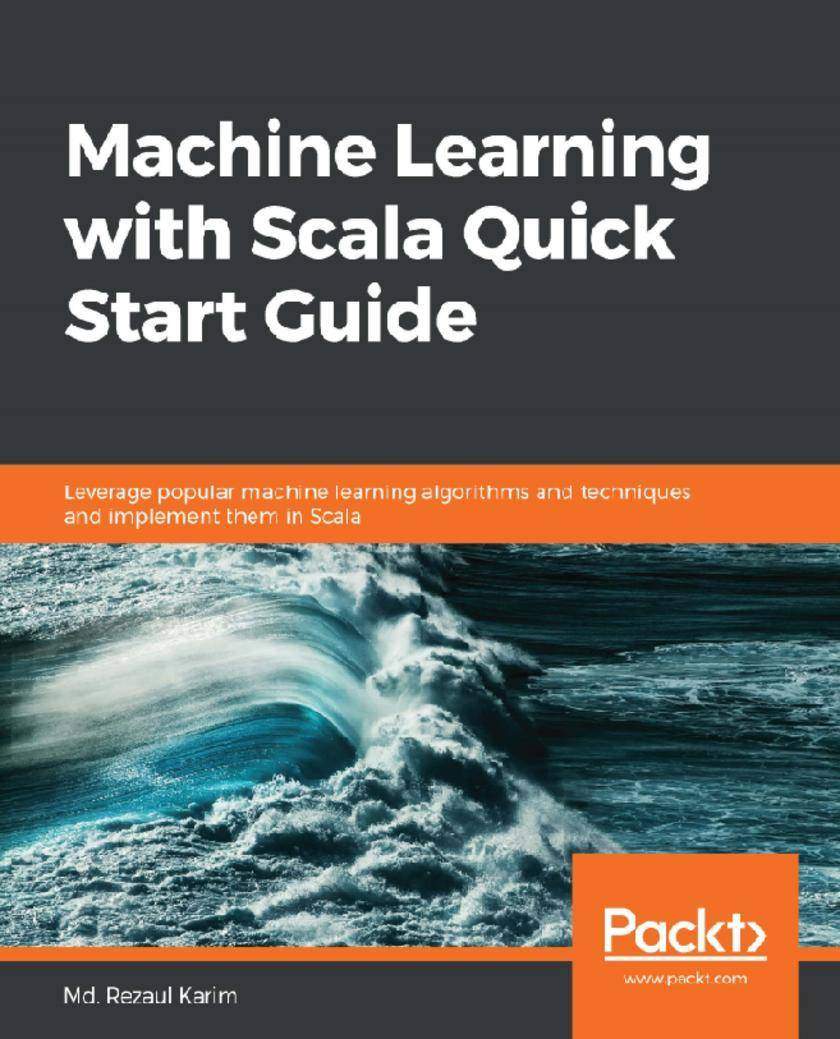
Machine Learning with Scala Quick Start Guide
¥53.40
Supervised and unsupervised machine learning made easy in Scala with this quick-start guide. Key Features * Construct and deploy machine learning systems that learn from your data and give accurate predictions * Unleash the power of Spark ML along with popular machine learning algorithms to solve complex tasks in Scala. * Solve hands-on problems by combining popular neural network architectures such as LSTM and CNN using Scala with DeepLearning4j library Book Description Scala is a highly scalable integration of object-oriented nature and functional programming concepts that make it easy to build scalable and complex big data applications. This book is a handy guide for machine learning developers and data scientists who want to develop and train effective machine learning models in Scala. The book starts with an introduction to machine learning, while covering deep learning and machine learning basics. It then explains how to use Scala-based ML libraries to solve classification and regression problems using linear regression, generalized linear regression, logistic regression, support vector machine, and Na?ve Bayes algorithms. It also covers tree-based ensemble techniques for solving both classification and regression problems. Moving ahead, it covers unsupervised learning techniques, such as dimensionality reduction, clustering, and recommender systems. Finally, it provides a brief overview of deep learning using a real-life example in Scala. What you will learn * Get acquainted with JVM-based machine learning libraries for Scala such as Spark ML and Deeplearning4j * Learn RDDs, DataFrame, and Spark SQL for analyzing structured and unstructured data * Understand supervised and unsupervised learning techniques with best practices and pitfalls * Learn classification and regression analysis with linear regression, logistic regression, Na?ve Bayes, support vector machine, and tree-based ensemble techniques * Learn effective ways of clustering analysis with dimensionality reduction techniques * Learn recommender systems with collaborative filtering approach * Delve into deep learning and neural network architectures Who this book is for This book is for machine learning developers looking to train machine learning models in Scala without spending too much time and effort. Some fundamental knowledge of Scala programming and some basics of statistics and linear algebra is all you need to get started with this book.
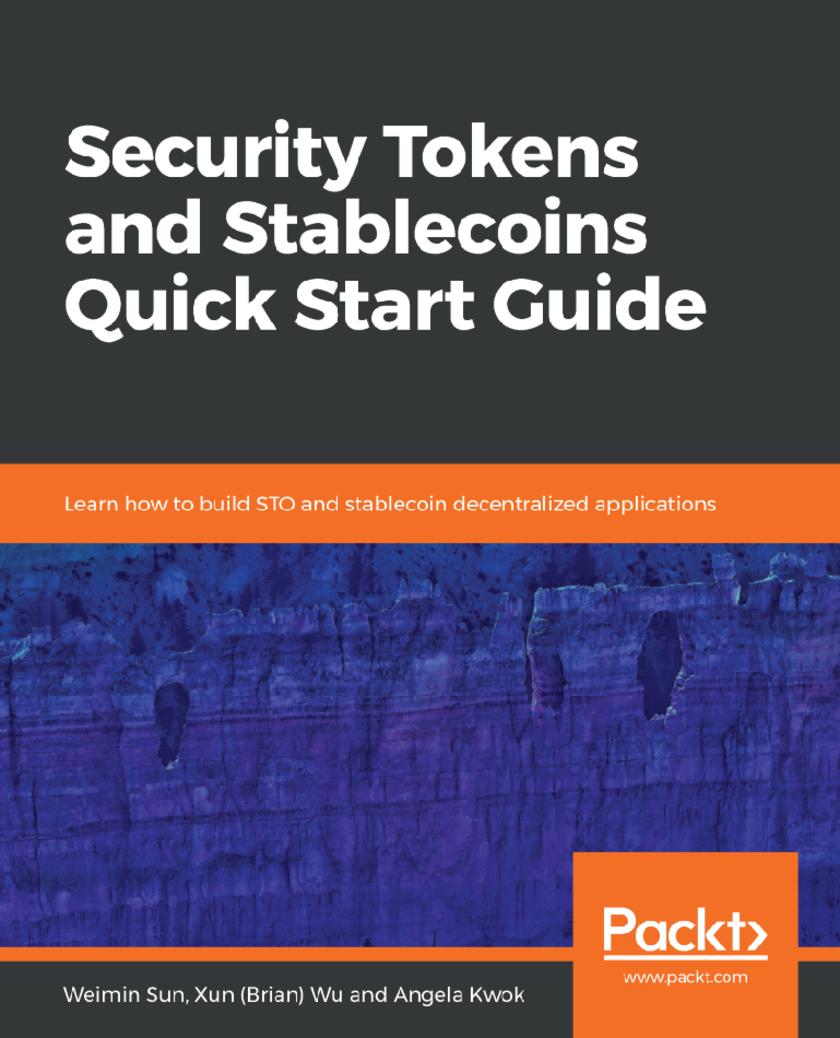
Security Tokens and Stablecoins Quick Start Guide
¥53.40
A complete guide to understanding, developing, and testing popular security-token smart contracts Key Features * Understand key Blockchain and Ethereum platforms concepts * Step-by-step guide to developing STO smart contracts on Ethereum * Monetize digital tokens under various U.S. securities laws Book Description The failure of initial coin offerings (ICOs) is no accident, as most ICOs do not link to a real asset and are not regulated. Realizing the shortcomings of ICOs, the blockchain community and potential investors embraced security token offerings (STOs) and stablecoins enthusiastically. In this book, we start with an overview of the blockchain technology along with its basic concepts. We introduce the concept behind STO, and cover the basic requirements for launching a STO and the relevant regulations governing its issuance. We discuss U.S. securities laws development in launching security digital tokens using blockchain technology and show some real use cases. We also explore the process of STO launches and legal considerations. We introduce popular security tokens in the current blockchain space and talk about how to develop a security token DApp, including smart contract development for ERC1404 tokens. Later, you'll learn to build frontend side functionalities to interact with smart contracts. Finally, we discuss stablecoin technical design functionalities for issuing and operating STO tokens by interacting with Ethereum smart contracts. By the end of this book, you will have learned more about STOs and gained a detailed knowledge of building relevant applications—all with the help of practical examples. What you will learn * Understand the basic requirements for launching a security token offering * Explore various US securities laws governing the offering of security digital tokens * Get to grips with the stablecoin concept with the help of use cases * Learn how to develop security token decentralized applications * Understand the difference between ERC-20 and ERC-721 tokens * Learn how to set up a development environment and build security tokens * Explore the technical design of stablecoins Who this book is for This book is ideal for blockchain beginners and business user developers who want to quickly master popular Security Token Offerings and stablecoins. Readers will learn how to develop blockchain/digital cryptos, guided by U.S. securities laws and utilizing some real use cases. Prior exposure to an Object-Oriented Programming language such as JavaScript would be an advantage, but is not mandatory.
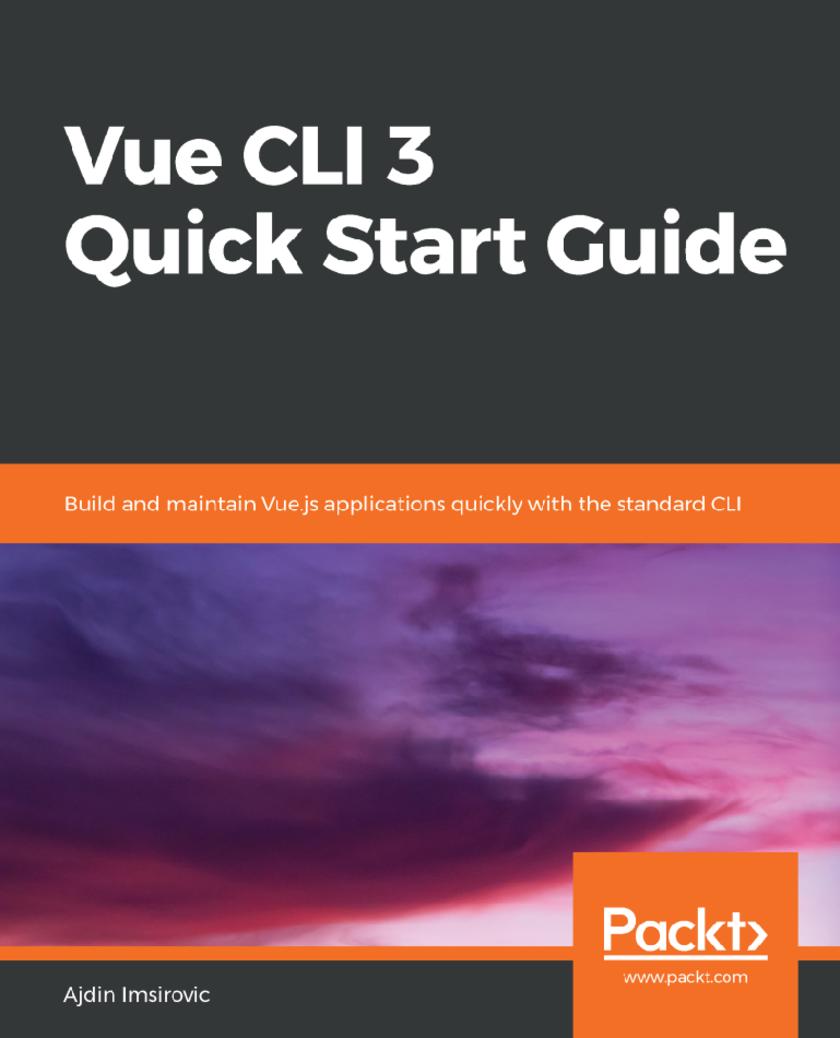
Vue CLI 3 Quick Start Guide
¥53.40
Build Vue apps the right way using Vue CLI 3. Understand how the building blocks of Vue CLI 3 work including npm, webpack, babel, eslint, plugins, GUI, testing, and SCSS. Import third-party libraries and maintain your project. Key Features * Learn to work with Vue CLI 3 both on the command line and with a GUI * Manage VueJS apps, settings, Vue plugins, and third-party libraries * Learn how to build Vue apps from scratch using webpack, babel, ES6, vue-router, Jest, Cypress, SCSS, and Git Book Description The sprawling landscape of various tools in JavaScript web development is becoming overwhelming. This book will show you how Vue CLI 3 can help you take back control of the tool chain. To that end, we'll begin by configuring webpack, utilizing HMR, and using single-file .vue components. We'll also use SCSS, ECMAScript, and TypeScript. We'll unit test with Jest and perform E2E testing with Cypress. This book will show you how to configure Vue CLI as your default way of building Vue projects. You'll discover the reasons behind using webpack, babel, eslint, and other modern JavaScript toolchain technologies. You'll learn about the inner workings of each through the lens of Vue CLI 3. We'll explore the extendibility of Vue CLI with the built-in settings, and various core and third-party plugins. Vue CLI helps you work with Vue components, routers, directives, and services in the Vue ecosystem. While learning these concepts, you'll examine the evolution of JavaScript. You'll learn about use of npm, IIFEs, modules in JavaScript, Common.js modules, task runners, npm scripts, module bundlers, and webpack. You'll get familiar with the reasons why Vue CLI 3 is set up the way it is. You'll also learn to perform linting with ESLint and Prettier. Towards the end, we'll introduce you to working with styles and SCSS. Finally, we'll show you how to deploy your very own Vue project on Github Pages. What you will learn * Work with nvm, install Node.js and npm, use Vue CLI 3 with no configuration, via the command line and the graphical user interface * Build a Vue project from scratch using npm and webpack, and learn about hot module replacement * Work with Babel settings, configurations, and presets * Work with Vue plugins, including testing plugins such as Jest and Cypress * Write, run, and watch unit and E2E tests using TDD assertions in the red-green-refactor cycle * Work with Vue router and use, nested, lazy-loading, and dynamic routes * Add SCSS to your projects and work with third-party Vue plugins * Deploy your Vue apps to Github Pages Who this book is for This book is for existing web developers and developers who are new to web development. You must be familiar with HTML, CSS, and JavaScript programming. Basic knowledge of the command line will be helpful but is not necessary.
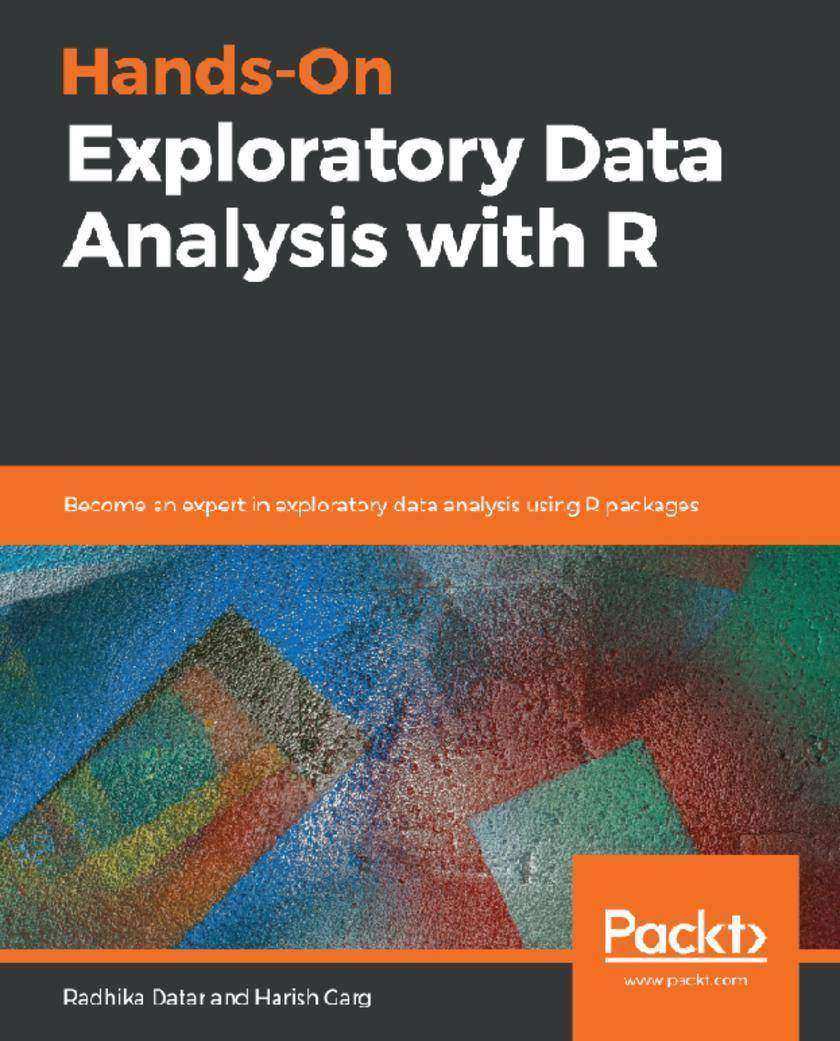
Hands-On Exploratory Data Analysis with R
¥53.40
Learn exploratory data analysis concepts using powerful R packages to enhance your R data analysis skills Key Features * Speed up your data analysis projects using powerful R packages and techniques * Create multiple hands-on data analysis projects using real-world data * Discover and practice graphical exploratory analysis techniques across domains Book Description Hands-On Exploratory Data Analysis with R will help you build not just a foundation but also expertise in the elementary ways to analyze data. You will learn how to understand your data and summarize its main characteristics. You'll also uncover the structure of your data, and you'll learn graphical and numerical techniques using the R language. This book covers the entire exploratory data analysis (EDA) process—data collection, generating statistics, distribution, and invalidating the hypothesis. As you progress through the book, you will learn how to set up a data analysis environment with tools such as ggplot2, knitr, and R Markdown, using tools such as DOE Scatter Plot and SML2010 for multifactor, optimization, and regression data problems. By the end of this book, you will be able to successfully carry out a preliminary investigation on any dataset, identify hidden insights, and present your results in a business context. What you will learn * Learn powerful R techniques to speed up your data analysis projects * Import, clean, and explore data using powerful R packages * Practice graphical exploratory analysis techniques * Create informative data analysis reports using ggplot2 * Identify and clean missing and erroneous data * Explore data analysis techniques to analyze multi-factor datasets Who this book is for Hands-On Exploratory Data Analysis with R is for data enthusiasts who want to build a strong foundation for data analysis. If you are a data analyst, data engineer, software engineer, or product manager, this book will sharpen your skills in the complete workflow of exploratory data analysis.
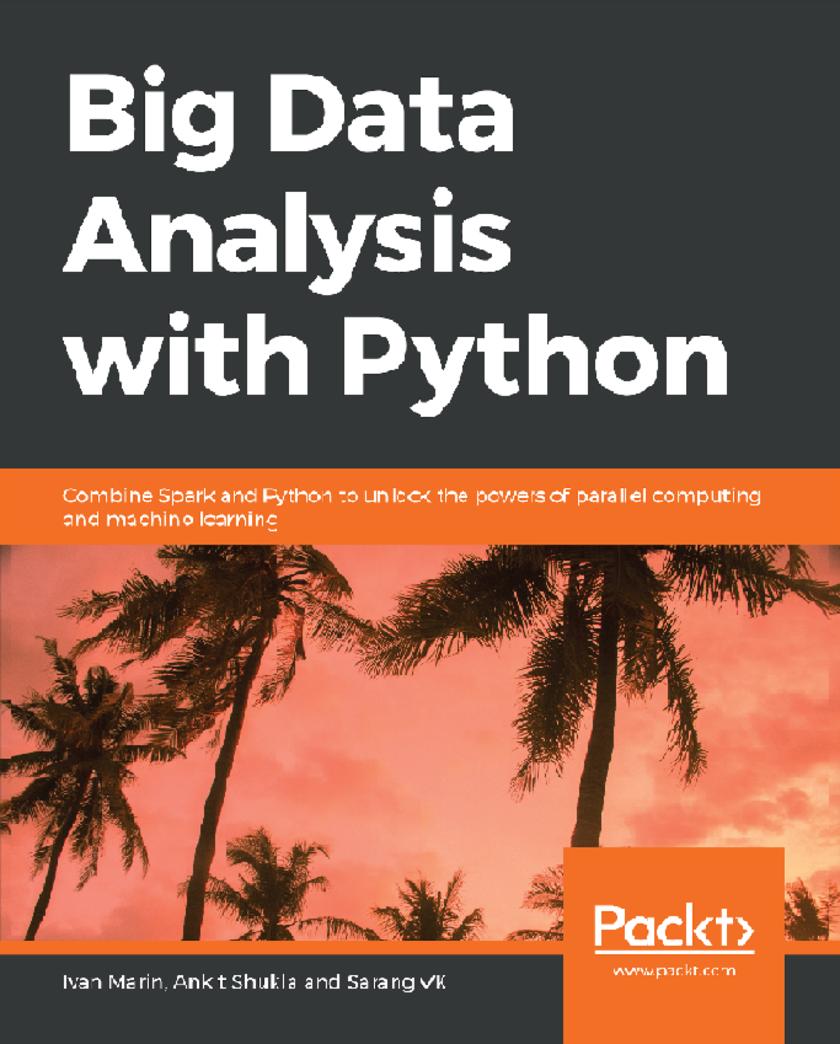
Big Data Analysis with Python
¥53.40
Get to grips with processing large volumes of data and presenting it as engaging, interactive insights using Spark and Python. Key Features * Get a hands-on, fast-paced introduction to the Python data science stack * Explore ways to create useful metrics and statistics from large datasets * Create detailed analysis reports with real-world data Book Description Processing big data in real time is challenging due to scalability, information inconsistency, and fault tolerance. Big Data Analysis with Python teaches you how to use tools that can control this data avalanche for you. With this book, you'll learn practical techniques to aggregate data into useful dimensions for posterior analysis, extract statistical measurements, and transform datasets into features for other systems. The book begins with an introduction to data manipulation in Python using pandas. You'll then get familiar with statistical analysis and plotting techniques. With multiple hands-on activities in store, you'll be able to analyze data that is distributed on several computers by using Dask. As you progress, you'll study how to aggregate data for plots when the entire data cannot be accommodated in memory. You'll also explore Hadoop (HDFS and YARN), which will help you tackle larger datasets. The book also covers Spark and explains how it interacts with other tools. By the end of this book, you'll be able to bootstrap your own Python environment, process large files, and manipulate data to generate statistics, metrics, and graphs. What you will learn * Use Python to read and transform data into different formats * Generate basic statistics and metrics using data on disk * Work with computing tasks distributed over a cluster * Convert data from various sources into storage or querying formats * Prepare data for statistical analysis, visualization, and machine learning * Present data in the form of effective visuals Who this book is for Big Data Analysis with Python is designed for Python developers, data analysts, and data scientists who want to get hands-on with methods to control data and transform it into impactful insights. Basic knowledge of statistical measurements and relational databases will help you to understand various concepts explained in this book.
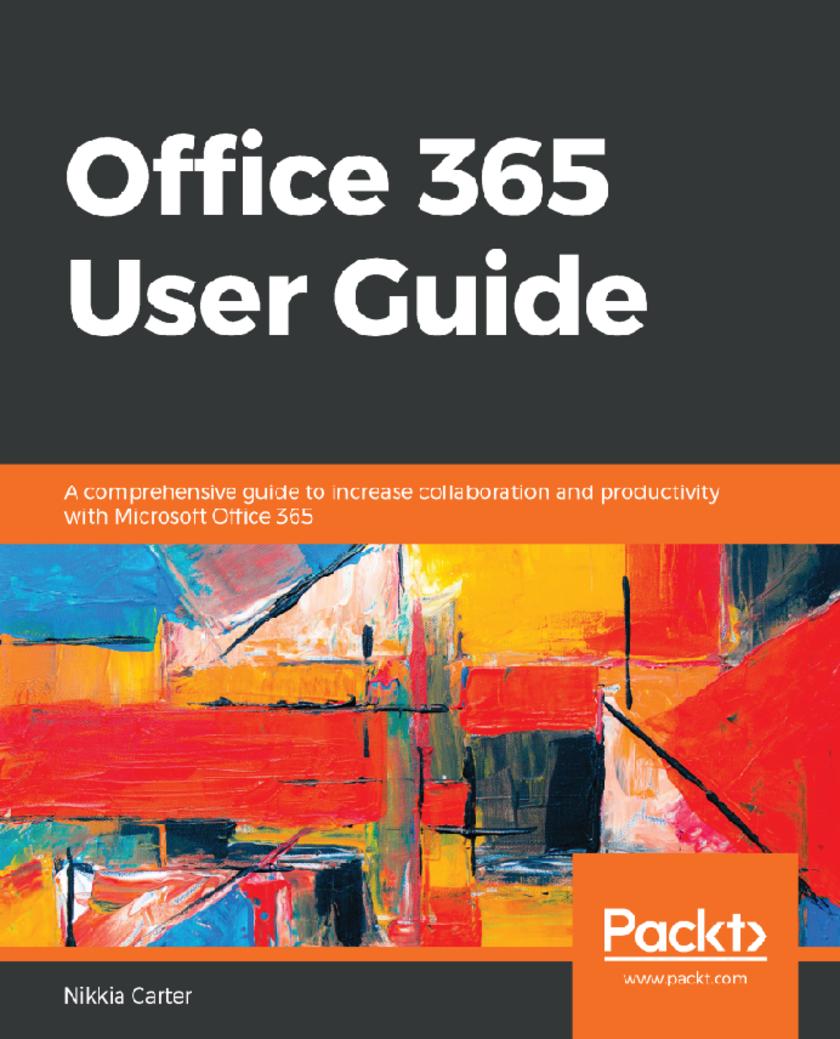
Office 365 User Guide
¥53.40
Work with the powerful subscription software, Office 365 to increase your organization's efficiency by managing file sharing, email exchange and much more. Key Features * Become well versed with Office 365 and leverage its capabilities for your business * Speed up your workflow and effectively collaborate using Office Web Apps * Learn to set audio and web conferences and seamlessly access your workspace Book Description Microsoft Office 365 combines the popular Office suite with next-generation cloud computing capabilities. With this user guide, you'll be able to implement its software features for effective business communication and collaboration. This book begins by providing you with a quick introduction to the user interface (UI) and the most commonly used features of Office 365. After covering the core aspects of this suite, you'll learn how to perform various email functions via Exchange. Next, you will learn how to communicate using Skype for Business and Microsoft Teams. To boost your productivity, this book will help you learn everything from using instant messaging to conducting audio and web conferences, and even accessing business information from any location. In the final chapters, you will learn to work in a systematic style using file management and collaboration with OneDrive for Business using SharePoint. By the end of this book, you'll be equipped with the knowledge you need to take full advantage of Office 365 and level up your organization's productivity. What you will learn * Understand the UI of Office 365 * Perform a variety of email functions through Exchange * Communicate using Skype for Business and Microsoft Teams * Explore file management using OneDrive for Business * Collaborate using SharePoint * Understand how to leverage Office 365 in your daily tasks Who this book is for If you are an IT professional who wants to upgrade your traditional Office suite, this book is for you. Users looking to learn, configure, manage, and maintain an Office 365 environment in their organization will also find this book useful. Some understanding of Microsoft Office Suite and cloud computing basics will be beneficial.




 购物车
购物车 个人中心
个人中心



